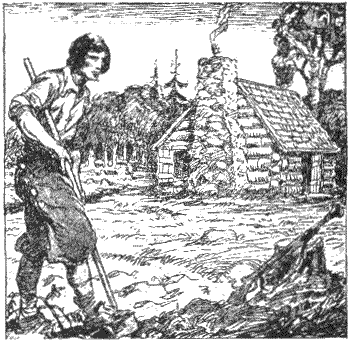 DAY'S
CATCH FROM VERMILION BAY DAY'S
CATCH FROM VERMILION BAY
My father harvested seafood from the lakes and from the salty waters of Vermilion Bay and the Gulf of Mexico. Dad had all kinds of fishing equipment, including tongs with which oysters were harvested. He took his boat out to the bay or the Gulf about once a week and he almost always had a considerable catch to bring home. On those days we feasted grandly. Because we had no refrigeration and Mom didn't trust salting or smoking fish to preserve it, Dad shared the surplus with his friends' families. Grandpa fished in the fresh water of the bayou and it was his almost daily catch, along with vegetables from his garden, and the chickens Mom raised that kept food on the table during the week. For bait, he used to dig for worms and scoop up crawfish with a hand net along the ditches and down by the side of the bayou and whenever Mom dressed a chicken for a stew or a gumbo, he took the entrails down to the bayou and washed them clean and put them in a jar with some salt to preserve them. He said the fish couldn't tell a piece of chicken gut from a worm. Occasionally he was able to get a piece of melt from the butcher in town, and he used this to catch fresh water crabs. We threw lines out from the little wharf right behind the house, and scooped up the crabs with a hand net. He had a trotline stretched across the bayou, low enough so that it would not get tangled up in the propellor of a passing boat, and he had what he called his "float" line (the "float" being an oversized cork) tied to a tree stump on the bayou bank over on Mr. Elie's side of the bayou. Twice while we lived in Perry, the salt water from Vermilion Bay intruded up the bayou as far as Abbeville, and each time Grandpa's catch included something that the salt water brought in. The first was a 30-pound sea cat. Everyone was so excited! Grandpa let me help him dress that fish. First, he scalded it and scraped all the dark blue off the skin, until only a light blue color remained. Then he removed the eyes and threaded a sturdy wire through the holes and tied that in a loop, which he hung from a big nail he had driven into a tree. (He used the same nail to secure squirrels when he skinned them.) He carefully cut through the skin just below the head and then with a pair of pliers, he pulled the skin from that fish all in one piece. He gutted it, then cut the flesh into filets - a bucketful of them. Mom kept the bones and skin to boil to make a hearty fish stock, which she used to make a delicious court bouillion. The filets were seasoned, dredged in cornmeal and deep-fried. We had plenty to share with our neighbors. One day, Grandpa walked to town and while he was gone, I saw that the cork on his "float" line was jerking around madly. I paddled across the bayou to investigate, and found it was a huge soft-shell turtle causing all the commotion. I wanted to haul it in, but Mom told me not to, because if I happened to let it get loose, Grandpa would never forgive me. When I saw him coming down the lane, I ran to meet him, shouting, "Hurry! Hurry! It's gonna' get loose if you don't hurry!" Well, Grandpa landed that turtle, and it was a monster! That was when I learned to dress a turtle. First, we cut off the head, of course, and hung it on a fence to dry. I was warned not to stick my finger in the mouth of that head, because even if it was dead, it could still bite me. (True or not, I don't know, because I did not try. My Mom didn't raise no fool!) Next came a good scalding, so that the outer skin could be scraped clean. Then we turned the turtle over on its back and Grandpa cut through the undershell where it joined the upper shell on each side, so he could run his knife under the undershell to remove it. This left everything in the "bowl" of the top shell. First he removed the entrails and the eggs (and there were a bunch of them in their soft shells), and then he cut the meat into pieces, leaving the thick skin on. (Today, you can buy turtle at a seafood market, but all the skin has been removed. Too bad, because that's where all the flavor is.) He even cut the soft edge of the shell into squares, and Mom fried those like fish. She fricassed some of the meat (like you might make a chicken fricasse), and she used the rest of it to make a sauce piquante. She even snipped open the shells of the eggs and used them to make cornbread. Mom didn't like to see any food go to waste! No body ever told her that turtle egg cornbread was not the best she ever made, but I reckon she knew that, anyhow. And Dee cleaned and dried that turtle shell, varnished it and lined it with some pretty fabric and made it into a sewing basket.
Copyright
© 2001 Aline T. Meaux, Abbeville, LA
|
